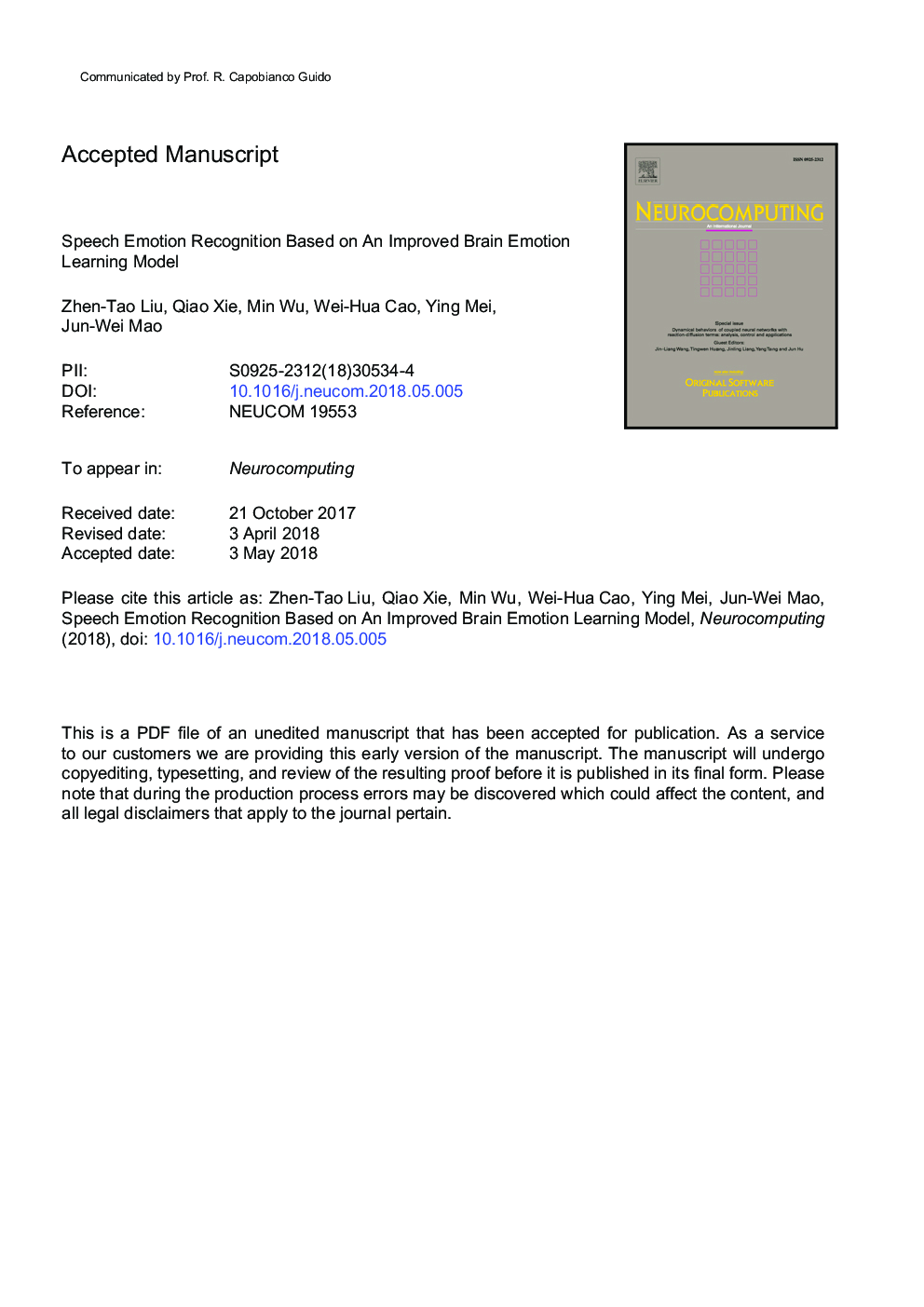| Article ID | Journal | Published Year | Pages | File Type |
|---|---|---|---|---|
| 6863692 | Neurocomputing | 2018 | 35 Pages |
Abstract
Human-robot emotional interaction has developed rapidly in recent years, in which speech emotion recognition plays a significant role. In this paper, a speech emotion recognition method based on an improved brain emotional learning (BEL) model is proposed, which is inspired by the emotional processing mechanism of the limbic system in the brain. The reinforcement learning rule of BEL model, however, makes it have poor adaptation and affects its performance. To solve these problems, Genetic Algorithm (GA) is employed to update the weights of BEL model. The proposal is tested on the CASIA Chinese emotion corpus, SAVEE emotion corpus, and FAU Aibo dataset, in which MFCC related features and their 1st order delta coefficients are extracted. In addition, the proposal is tested on INTERSPEECH 2009 standard feature set, in which three dimensionality reduction methods of Linear Discriminant Analysis (LDA), Principal Component Analysis (PCA), and PCA+LDA are used to reduce the dimension of feature set. The experimental results show that the proposed method obtains average recognition accuracy of 90.28% (CASIA), 76.40% (SAVEE), and 71.05% (FAU Aibo) for speaker-dependent (SD) speech emotion recognition and the highest average accuracy of 38.55% (CASIA), 44.18% (SAVEE), 64.60% (FAU Aibo) for speaker-independent (SI) speech emotion recognition are obtained, which shows that the proposal is feasible in speech emotion recognition.
Related Topics
Physical Sciences and Engineering
Computer Science
Artificial Intelligence
Authors
Zhen-Tao Liu, Qiao Xie, Min Wu, Wei-Hua Cao, Ying Mei, Jun-Wei Mao,
